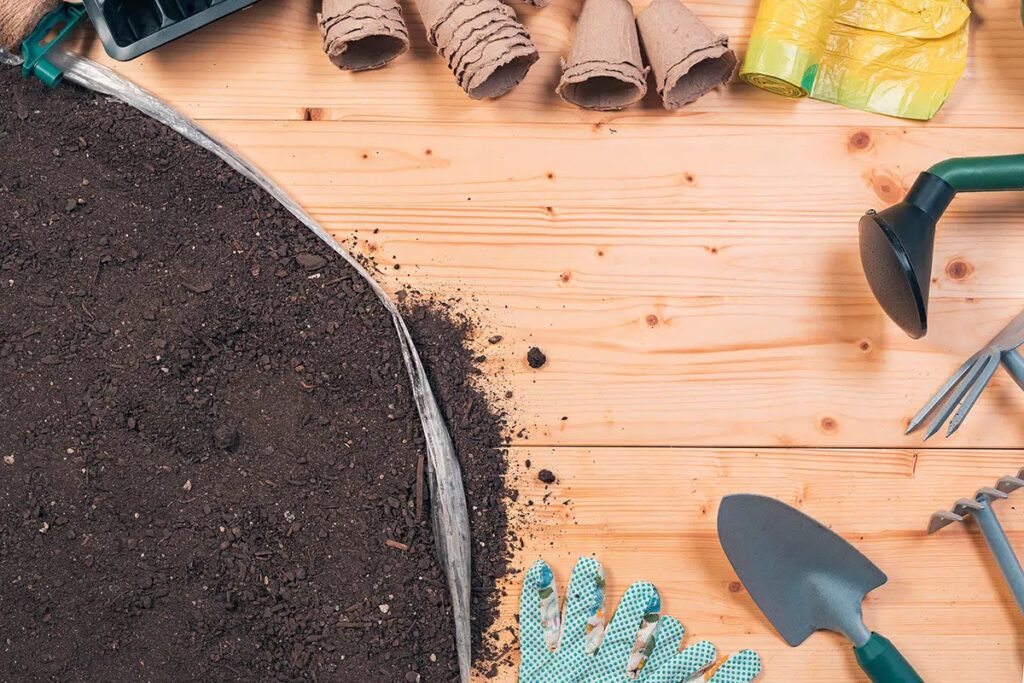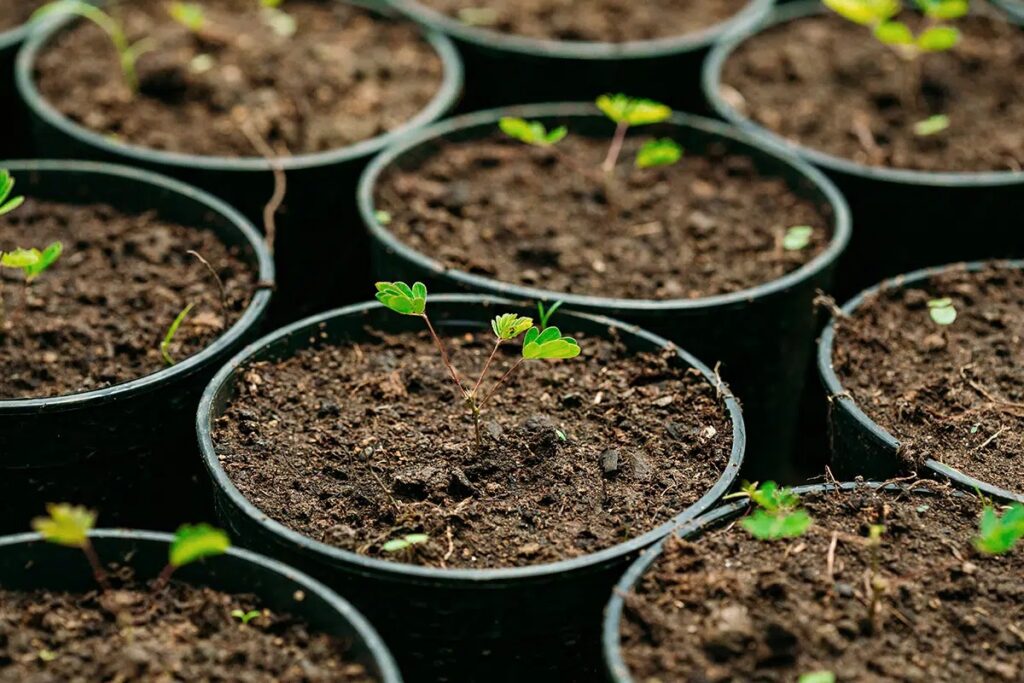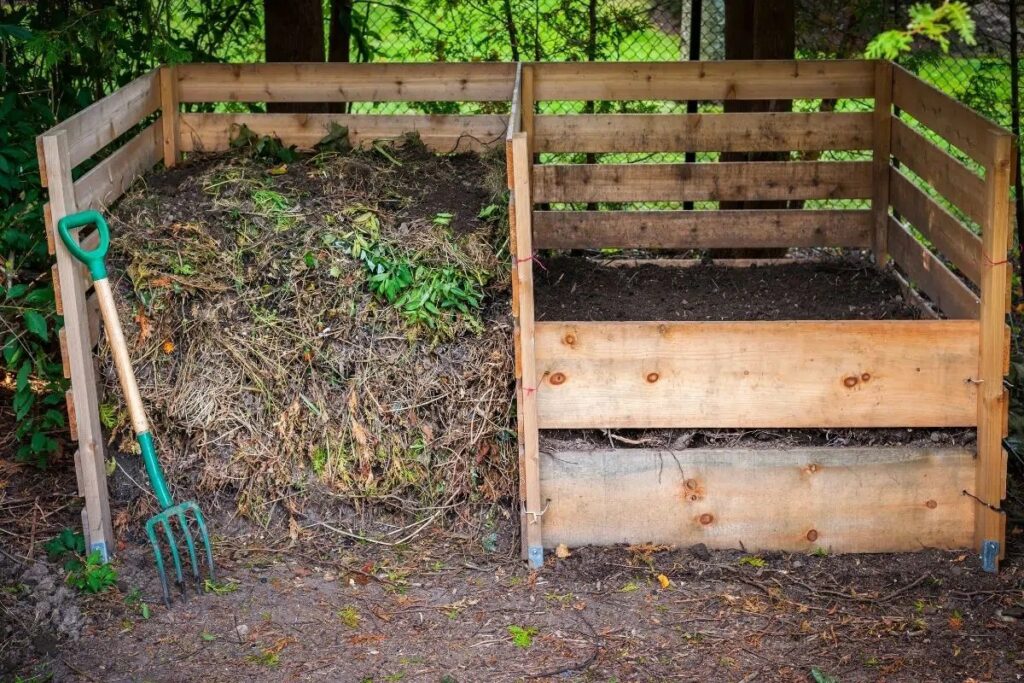For the plants in the house, on the balcony and in the garden to thrive in the best possible way, they need light, warmth, water and also a suitable substrate that contains important nutrients. When it comes to soil, however, the question arises as to which is the right one. Should you opt for a potting soil or would it be better to use a planting soil? And what is the difference?
Contents
Guide values or standards
You would think that there would be binding guide values or even standards for the designation of soil mixtures. But that is not the case. Only the manufacturers decide how to declare their substrates. Therefore, the labeling is often a bit confusing and does not necessarily mean that flowers grow better in potting soil than in planting soil. Much more crucial, therefore, are the ingredients of the soil. But despite this problem, the terms can be defined a little more precisely.
Ingredients
Both potting and planting soil are designed to provide plants with a good foundation for healthy growth. Since the basic soil requirements must be met for almost all plant species, the main ingredients of potting and planting soil are also similar. However, the amounts of each component can vary greatly. The ingredients in soils include:
- organic components: mostly humus or peat
- additionally often compost
- mineral components: sand, clay or even silt
- provide for a better structure
- lime (to adjust the pH value)
- Fertilizer
- additives (such as algae, coconut or wood fibers)
Intended use
In general, it can be said that both potting and planting soils meet the basic needs of almost all plants. In most cases, however, potting soils are designed for outdoor planting, while potting soils are designed for growing in pots. Due to the more difficult growing conditions in pots, higher demands are placed on the substrate. Therefore, it differs in some respects from a normal potting soil.

Potting soil
Most often, potting soils are not used as the only substrate, but are used when planting in a bed or the garden. They are intended to help improve soil conditions and optimize it in terms of texture. Universal potting soils are not designed for a specific type of plant. Therefore, there is a range of special soils for roses to vegetables or tomatoes. Normal potting soil is generally suitable for plants in the garden, in raised beds or even in the greenhouse. These include, for example:
- Woody plants (trees, shrubs)
- Hedges
- Perennials in the garden bed
- Roses
- Ground cover
Potting soil
All flowers and plants that are not cultivated outdoors but in pots have completely different requirements with regard to the substrate. Due to the limited supply of space and soil, the demands on the substrate are particularly high with regard to certain properties such as storage and drainage of irrigation water.
- Houseplants
- Flowers in balcony boxes
- Plants in pots on the balcony or terrace
- perennials and flowers in beds and borders
- moderately fertilized potting soils: universally applicable
Differences
Even though the composition of the two substrates is very similar, the difference lies in the details. This comes from the different applications for the soils. Since potted plants usually have different conditions than their outdoor relatives, the composition of the substrate is usually different from a potting soil. In general, however, it can be said that a moderately fertilized potting soil can be used for almost all plants, regardless of whether it is a potted plant, rose or ornamental shrub.

- peat content
Peat has ideal properties for high-quality potting soil. Especially its enormous water storage power makes it popular for growing media. Potting soil differs from potting soil in its high peat content, ranging from 50 to 90%. Together with nutrients and additives such as clay, it becomes optimal substrates. The pH can be easily increased to the desired value with lime.
- Peat has a great influence on the pH of the substrate
- ensures good water retention
- loosens the soil
Tip: Even if nowadays substrates with peat have come into disrepute because of the damage to the moors: There is as yet no substitute that could replace all the positive properties of peat
- humus
One of the most important ingredients for good substrates is humus. It is responsible for the characteristic brown color of the soil and not only determines the water, heat and air balance of the soil, but also has a buffer and filter function. Humus is therefore a decisive factor for the fertility of the soil. As a rule, potting soils have a significantly higher proportion of humus than potting soil. Peat-free potting soil is an exception. Since peat is not so easy to replace, a mixture of different components is used to guarantee similar properties:
- Green compost
- Wood fiber
- Bark humus
- Coconut fibers
Tip: Pure compost is not an adequate substitute for a planting or potting soil. It lacks important components that are essential for good soil condition
- water storage capacity
Potting soil ideally contains certain ingredients that can hold more moisture and nutrients in a limited space. Outdoor plants, which can spread their roots freely in the soil, usually do not need these ingredients, which is why they are present in only a few potting soils.
Clay
Clay
Coconut fiber
Tip: Potting soils consist of up to 20% clay. However, it should be high-quality 3-layer clay minerals, as only these have the necessary properties
- structure
While a potting soil utilizes the stability of the natural garden soil, a potting soil must be inherently structurally stable. The substrate must not slump and compact over time, so that sufficient air reaches the roots and waterlogging does not occur. For this reason, unlike potting soil, potting soil usually contains various components or additives that provide a better and more stable structure.
Compost
Coconut fiber
Perlite

- nutrient supply
Both commercially available potting soil and potting soil contain fertilizer, which provides the plants with vital nutrients in the first few weeks. Only special soils such as sowing or growing soil have a significantly reduced nutrient content.
Potting soil: little nitrogen, phosphate and sulfur, but more potassium.
Potting soil: more nitrogen, phosphate and sulfur, but less potassium
- additives
The addition of other substances changes the physical and chemical properties of the soil. These additives are primarily used to improve water drainage during watering to prevent waterlogging and root rot. In contrast to a potting soil, a good potting soil usually contains a mixture of:
- Perlite
- Split
- Quartz sand
- Clay pellets
- Styromull
- Rock wool flakes
Conclusion
Almost all soils, whether potting or planting, consist largely of peat and compost or humus. However, they often differ in their nutrient content, structure and permeability, and pH. In practice, however, a potting soil, unlike a planting soil, can be used universally. However, the decisive factor is always the very specific composition, which you will find on the packaging of a high-quality product.










